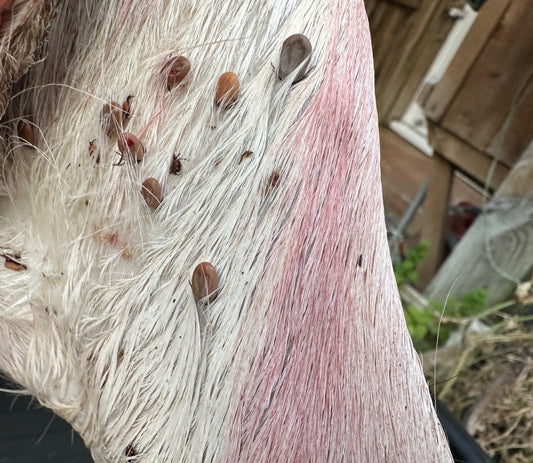In the world of Christmas tree farming, one of the less visible yet significant challenges is the impact of deer on plantations. This issue extends beyond the simple presence of these animals; it's their attraction to the trees and the subsequent damage they cause that poses a real concern for growers.
Christmas tree plantations face a unique challenge from deer, primarily due to the nutritional allure these trees offer. Deer are drawn to Christmas trees for several reasons:
Nutritional Value: Christmas trees, especially young shoots, are rich in nutrients and provide a valuable food source for deer, particularly in winter when other food is scarce.Palatability: The tender shoots and leaves of young Christmas trees are more palatable compared to other woody plants, making them a preferred choice for deer.
The preference for Christmas trees can result in significant damage. Deer browsing not only impacts the growth and shape of the trees, making them less marketable, but it can also lead to increased disease transmission as deer carry pathogens harmful to tree health.
Deer Attraction to Christmas Trees
Christmas trees offer a particularly appealing source of nutrition for deer, especially during the leaner winter months. Young shoots of these trees are not only rich in nutrients but also softer and more palatable compared to other available vegetation. This makes Christmas tree plantations an attractive feeding ground for deer. As they seek out these nutrient-rich food sources, deer can become frequent, unwelcome visitors to these plantations.
The Damaging Effects of Deer Browsing
The presence of deer in Christmas tree plantations can lead to significant challenges. When deer feed on the young shoots, leaves, and branches of these trees, the physical damage is twofold. Firstly, it can stunt the growth of the trees, as the constant browsing hampers their natural development. Secondly, this feeding habit often results in the trees growing in distorted shapes, reducing their marketability as Christmas trees. Since these trees take several years to reach maturity, the damage inflicted in their early years can result in long-term economic losses for the plantation owners.
Disease Risks Associated with Deer
Apart from the physical damage, deer also pose a risk of disease transmission to Christmas trees. They can act as carriers for various pathogens, which can be detrimental to the health of the trees. This aspect of the deer impact is often underestimated but can lead to serious plantation-wide problems if not adequately managed. Plantation owners need to be vigilant about this added risk that comes with deer presence.
Strategies for Managing Deer Impact
Addressing the challenge of deer in Christmas tree plantations requires a multi-faceted approach. Erecting physical barriers, such as fencing, is an effective way to keep deer out, though it comes with significant costs. The use of chemical or natural repellents can be a less invasive method, but they need regular reapplication and may not always be fully effective. In areas with high deer populations, a controlled reduction in numbers might be necessary, balancing ecological considerations with plantation protection. Collaborating with wildlife management professionals can provide plantation owners with tailored solutions that take into account both the protection of their crop and ethical wildlife management practices. Additionally, modifying the surrounding habitats can make the plantations less attractive to deer, thus reducing their visits.
Conclusion
The impact of deer on Christmas tree plantations is a complex issue that requires understanding, planning, and proactive management. Plantation owners need to balance the need to protect their crop with the welfare of the wildlife. By adopting a combination of preventive measures and seeking professional advice, it's possible to mitigate the negative effects of deer and ensure a healthy and profitable harvest. Christmas tree farming, while festive and rewarding, involves navigating these unique challenges to maintain a sustainable operation.




